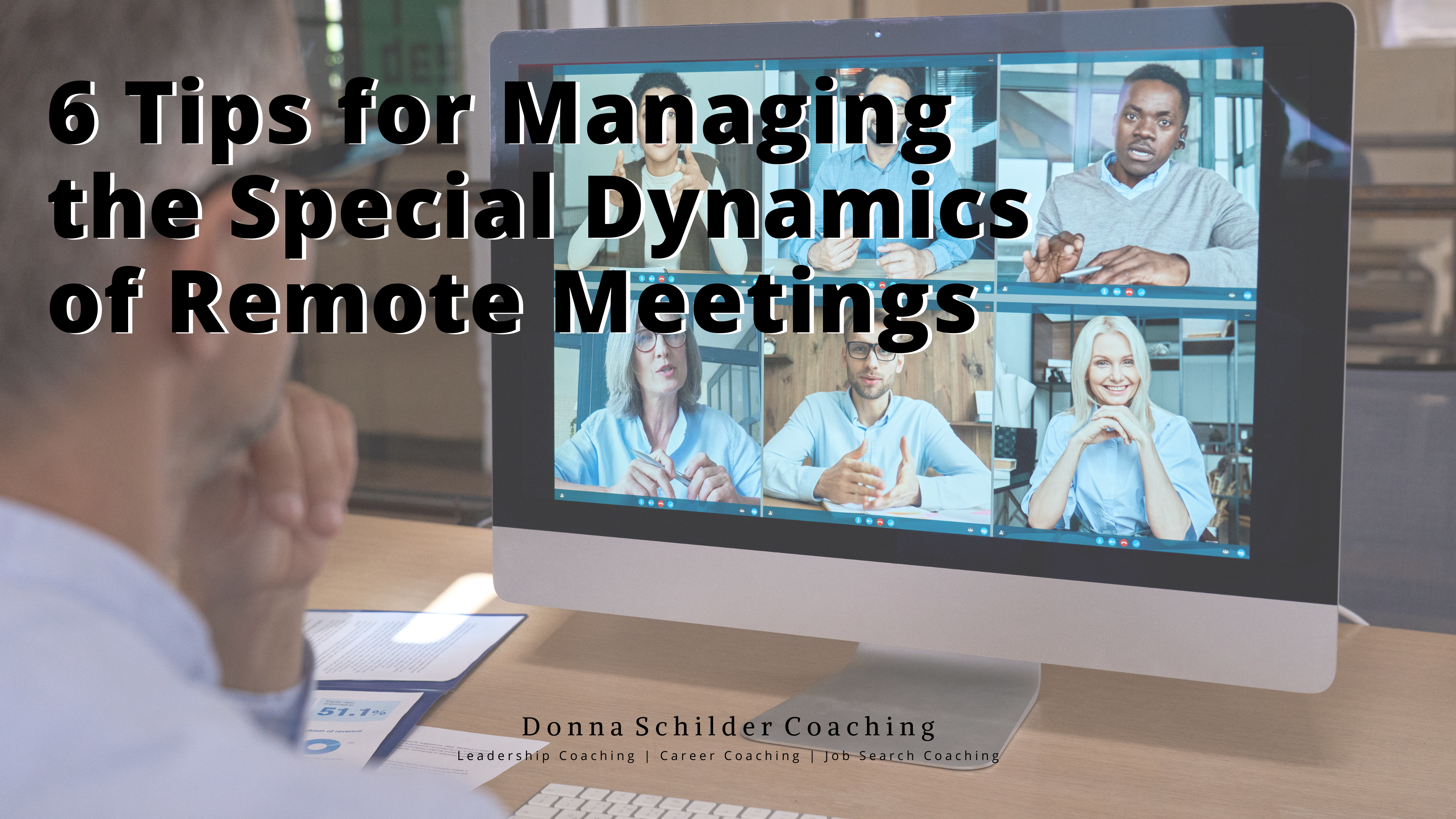6 Tips for Managing the Special Dynamics of Remote Meetings is part 11 of our series on Remote Meetings:
• Part 1: Remote and Hybrid Team Meeting Tips
• Part 2: Set and Don’t Forget: Remote Meeting Ground Rules
• Part 3: 6 Remote Meeting Functions to Supercharge Your Virtual Meetings
• Part 4: Prepare in Advance for Your Remote Meetings to Create Higher Engagement
• Part 5: Keep Remote Meetings Simple, Short, and Fun
• Part 6: Lead Your Remote Meetings with the Virtual Platform in Mind
• Part 7: Manage Remote Meeting Logistics
• Part 8: Reduce the Number of Participants in Remote Meetings
• Part 9: Implement Team Building Activities in Your Remote Meetings
• Part 10: Remote Meeting Decision-Making
• Part 12: 8 Tips for Managing Hybrid Meetings
Managing the Special Dynamics of Remote Meetings
Managing the special dynamics of remote meetings can feel overwhelming. In this post we’ll look at ways to manage the challenges of remote meetings, including applying more structure to the meeting. After all, remote meetings aren’t the place to get sloppy about applying good leadership practices.
Our executive coaches have years of experience helping leaders be more effective in both on-site and remote meetings, and they know there’s a big difference between the two. In remote meetings, there are more distractions, fewer opportunities to read body language, and other challenges.
The following best practices will help you and other leaders make the most of remote meetings. Great meetings don’t happen by accident; you should take a deliberate approach to preparation and execution.
1. Ensure that each participant knows “why.”
Ensure that each participant knows why they are attending the meeting, and what will be expected of them. This will help them plan and be prepared to participate fully. According to Shyamli Rathore, senior moderator with Harvard Business Publishing, setting clear expectations helps create a collaborative meeting environment.
2. Create a well-planned agenda for every meeting.
Have a well-planned agenda for every meeting and use it during the meeting to give your meeting a tight structure. This will help not only keep the meeting on track, but also convey that you value everybody’s time.
As you plan your agenda, ask yourself: What is the purpose of the meeting? What will participants need from you? What will you need from participants?
Deanna deBara (on Slack.com) recommends setting timelines for each agenda item to be sure to cover the entire agenda. If it seems that certain items need additional discussion, you can schedule follow-up meetings with the appropriate stakeholders.
Share the agenda before the meeting and show it during the meeting to remind participants to stay focused.
During the meeting, make sure you use the agenda to drive the meeting. Check it often and adjust course if the meeting has gone off track. As you move through the items, let participants know that the current item has been completed and that you are moving on to the next item. State the next item to be covered. That way participants will know where you are in the meeting and will know that the team is moving forward. Creating this kind of structure for your meeting will help you avoid confusion and manage the time in the meeting.
3. Keep everyone on the same page.
Keep everyone on the same page during your virtual meeting. Briefly recap key information or decisions to ensure that participants have absorbed critical information.
4. Consider assigning participants roles.
Consider assigning participants roles for the meeting such as taking the minutes, timekeeping, managing the slides, ensuring the participants don’t stray from the agenda, recapping and summarizing, ensuring action items are captured, or ensuring everyone participates. This will help encourage engagement throughout the meeting.
5. Ensure everyone has a chance to participate.
You may need to call on people who are more reserved or shy about speaking up. Prior to the meeting, let people know that participation is expected.
If the meeting is hybrid, with some people in a conference room and some calling in from home, there may be a tendency for the on-site participants to dominate. The meeting leader should be proactive about ensuring that everyone has a chance to speak.
6. Hold participants accountable.
In addition to assigning action items to specific people, make sure everyone knows who will hold them accountable for completing their action items.
If the remote meeting is a meeting with your staff, your team members will know that you are the one who will hold them accountable for action item completion.
If the meeting is a cross functional meeting, you, as the team leader, are responsible for holding team members accountable for action items, but ultimately it is either the stakeholder for the project (or the team member’s manager) who holds the team member accountable for task completion. That means if a team member repeatedly does not complete an action item(s), you as team leader are responsible for involving the stakeholder or manager.
The stakeholder or manager should help remove any roadblocks encountered by team members as well.
With the help of a leadership coach, managing the special dynamics of remote meetings could be what helps you stand out as a leader at your company!
Check back with us soon for more remote meeting insights, and, for additional ideas on optimizing your in-person and remote meetings. For information about all meetings (in person, virtual, or hybrid), see our blog on Meeting Management Tools.





 Donna Schilder
Donna Schilder